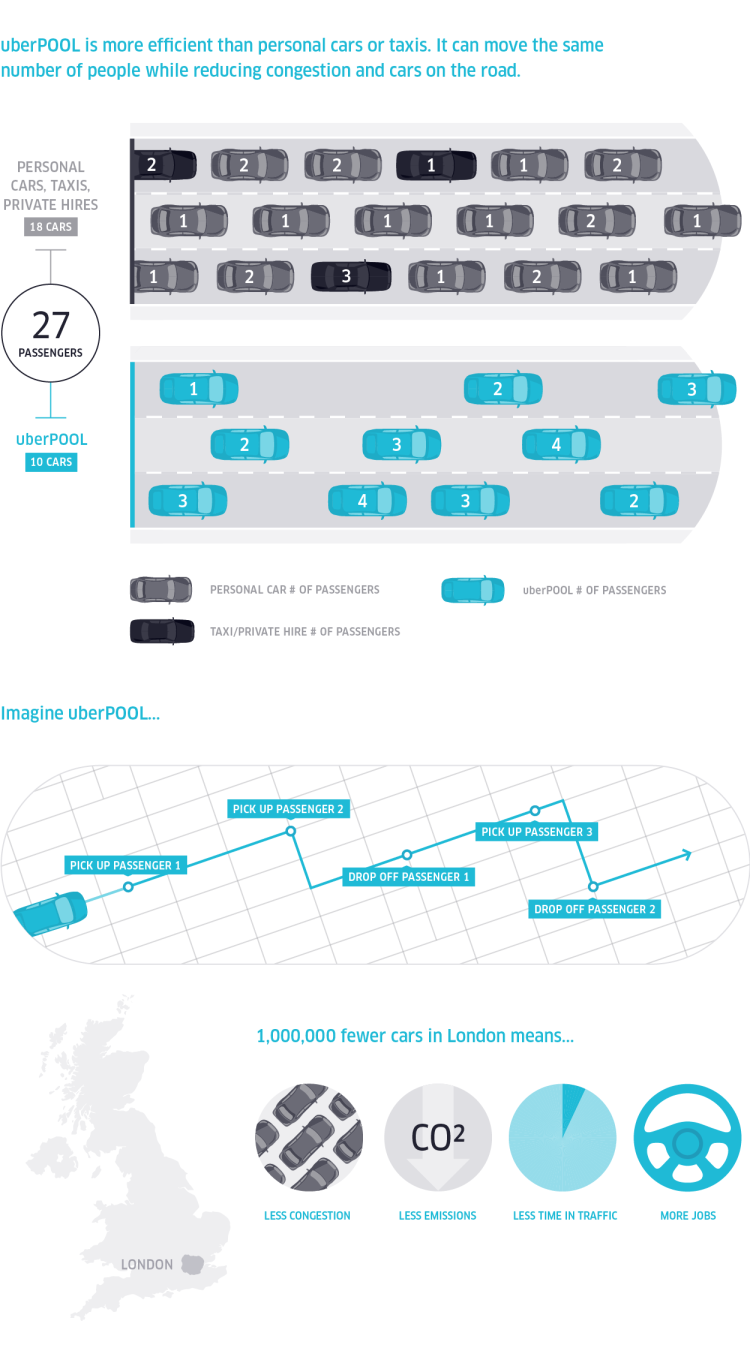Uber has emailed me to say that they have no official comment on the percent reduction in the traffic, only the reduction from 18 to 10 cars. Since there has been some confusion about how to interpret this number, I address it below the original post
One of the promises of the sharing economy is that we’ll all be less wasteful and save ourselves money. This year, both Uber and Lyft introduced a feature that allows riders to share trips with other strangers in exchange for a deep discount (currently around 20 percent).
In select cities where Uber’s version, UberPool, is available, Uber confirmed to Venturebeat that the service reduces traffic congestion by roughly 55 percent. This statistic jives with the estimate that a recent MIT study of what carpooling could do for the taxi industry.
After analyzing traffic and trip patterns, the MIT researchers found that 95 percent of all rides could be shared. Perhaps most concerning for the taxi industry (and Uber drivers), ubiquitous car-sharing would reduce the taxi fleet by a whopping 40 percent.
“Our analysis shows that New York City offers ample opportunity for trip sharing with minimal passenger discomfort,” concludes the researchers.
California regulators have threatened legal action against both Uber and Lyft for their carpooling feature, which they claim “violates existing California law.” Despite threats, both companies plan to continue the feature.
I’ve been using UberPool for the last week in San Francisco and have yet to meet another passenger during the ride. So I can’t speak to the quality of the service yet.
Read the full Uber blog post here.
Update: There has been some confusion about how to interpret this number. Uber has obviously not taken 50% of cars off the road in the entire city of where Uberpool is available. Rather, it’s a reflection of the percent of Uber’s fleet. Specifically, a reflection of Uber cars in select areas where they operate Uberpool and the number of Uber cars that can operate with Uberpool. It’s a proof-of-concept service about how many rides they could actually reduce traffic by, based on the limited experience of a new feature. So far, some users are opting for Uberpool and it’s reducing the number of cars potentially needed by roughly 50%. That’s a very promising sign. The fact that they have yet to match me with a passenger means that it doesn’t work in every instance (hence, roughly 50%, and not a much higher number, which would be the case if every car took 3 passengers instead of 1). Hope this clears up how to interpret the number.
VentureBeat's mission is to be a digital town square for technical decision-makers to gain knowledge about transformative enterprise technology and transact. Learn More

